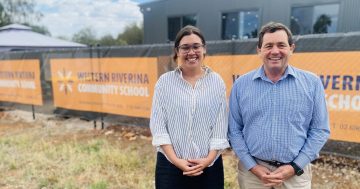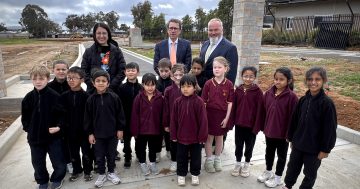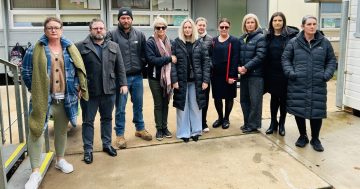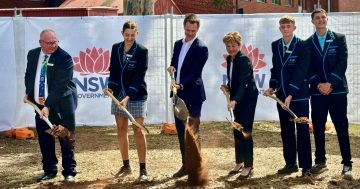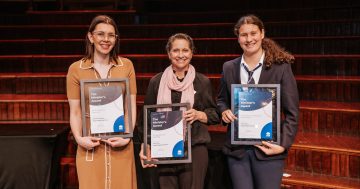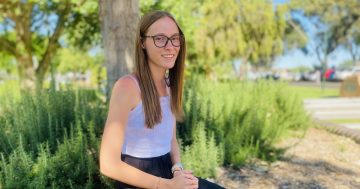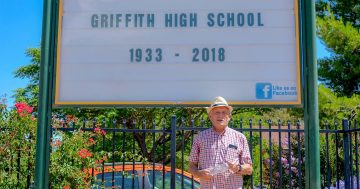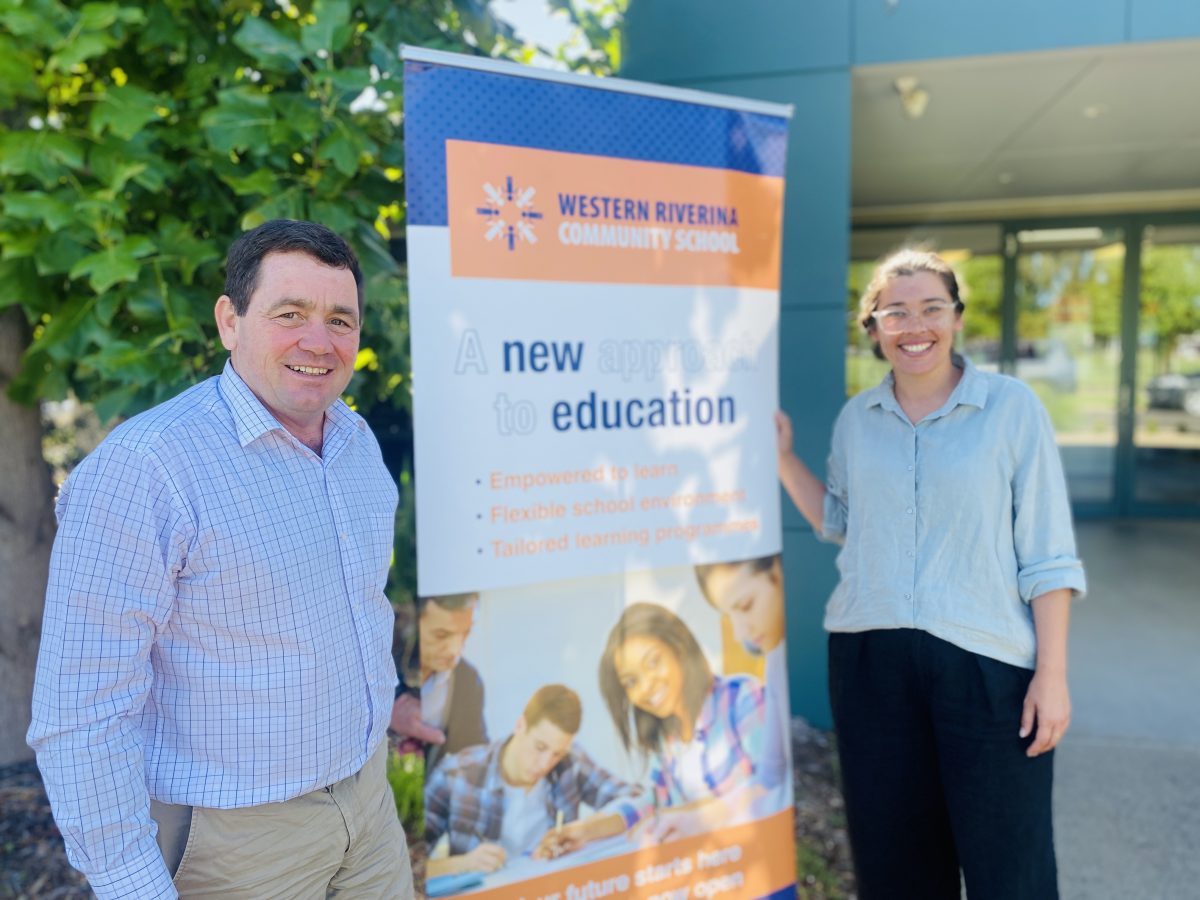
WRCS principal David Martin and head teacher Jasmine Dossetor. Photo: Oliver Jacques.
Griffith’s first alternative school is hopeful it can this year move to its new location in Kookora Street, where an expanded development will enable it to increase enrolments by 50 per cent and provide students with a kitchen facility, an outdoor learning space, a basketball half-court and a garden.
Western Riverina Community School (WRCS) opened in 2018 in Hickey Crescent as a sub-entity of the adult vocational learning facility Western Riverina Community College (WRCC). It currently caters to 30 enrolled students in years 9 to 12 and has grown to the point it needs its own location.
“The new block gives us room for four classrooms and a proper outdoor space, which we are lacking now,” principal David Martin said. “We could teach about 45 students … we hope to be able to move there by Term 3.”
WRCC has raised and borrowed more than $2 million to construct the new facilities, but soaring inflation after COVID-19 has seen the cost of the project increase by $600,000. Mr Martin has appealed to the community to contribute via an online donations page to help ensure all aspects of the planned build go ahead.
“I’ve tried to raise the funds to help build the school … people have said, ‘You’ve started that school and there hasn’t been one high-profile person or politician that has come along and championed it … but you’ve still gone on and done it’,” he said.
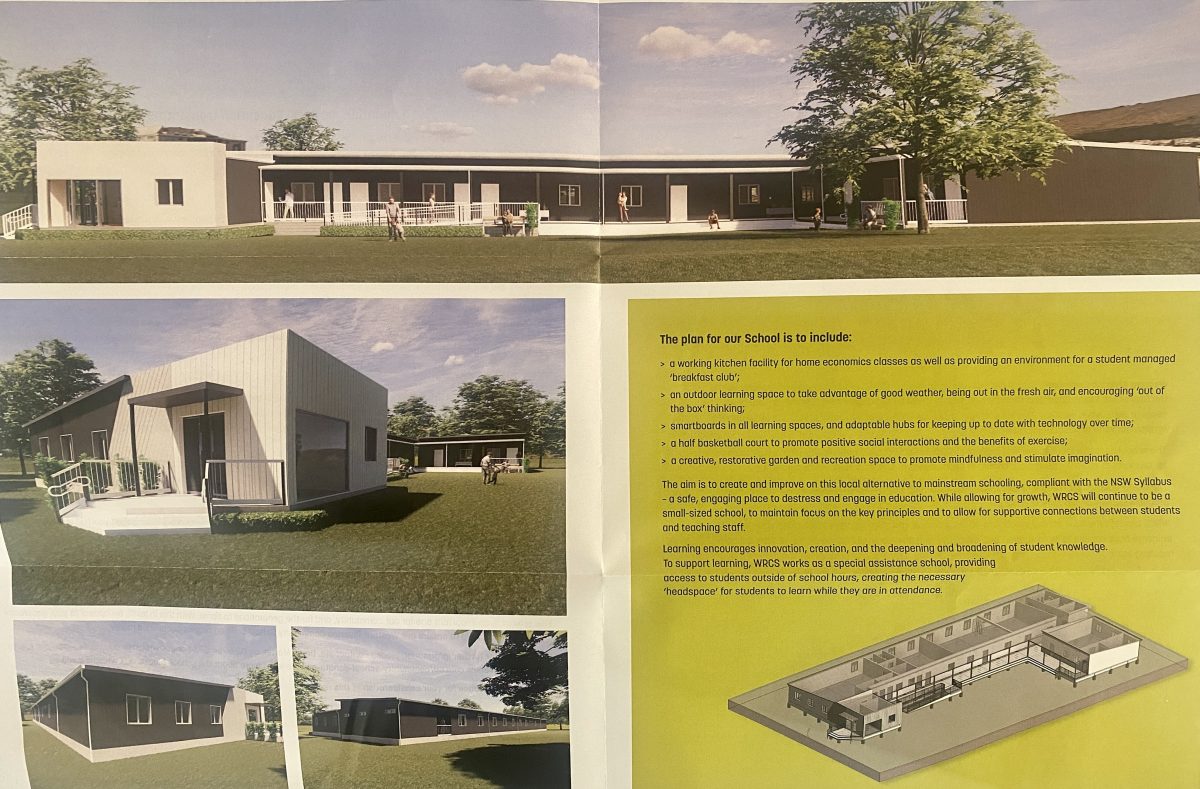
The plan for the new school, which WRCC hopes to complete by the end of the year. Photo: Supplied.
Mr Martin is passionate about providing the best opportunities for those who don’t fit in to mainstream education, a cohort he understands well, having dropped out of school himself in year 10.
“I didn’t find school engaging, I left at 16. It wasn’t for me. I don’t think I was ever stupid, but it felt like I was going through the motions.”
The school he now runs – which is the first of its type in Griffith – offers something to students who were like him in his youth.
“Our program is similar to what an HSC program would look like, it’s just without the continuous assessment. It’s about the learning more than the assessment. Students don’t get an ATAR, but they get a certificate … which details learning outcomes for each course.
“The students and teachers are on a first-name basis. We also provide meals … a lot of our students have experienced trauma at some stage. We do trauma-informed learning, it’s about reducing stress beforehand, [trauma] is de-escalated so people are ready to learn for the day … there’s a lot of people who can’t manage in a [mainstream] school environment.”
WRCS offers smaller classes and more targeted support, something Mr Martin said had reaped good outcomes in the five years since the project began.
“More than 80 per cent of our students go on to traineeships, apprenticeships or further studies … if we didn’t exist as a school, the number who have made it through to employment would be considerably less.
“The return on investment for government is enormous. There is rooms full of research that will tell you if you finish your secondary school, you’re healthier, you’re wealthier … the negative side, though, is that those who don’t finish school end up interacting with the police system, the health system, the welfare system and all the associated costs that go along with that.”
To find out more about the school, or to make a donation to its building funding, you can do so via the WRCS website.







